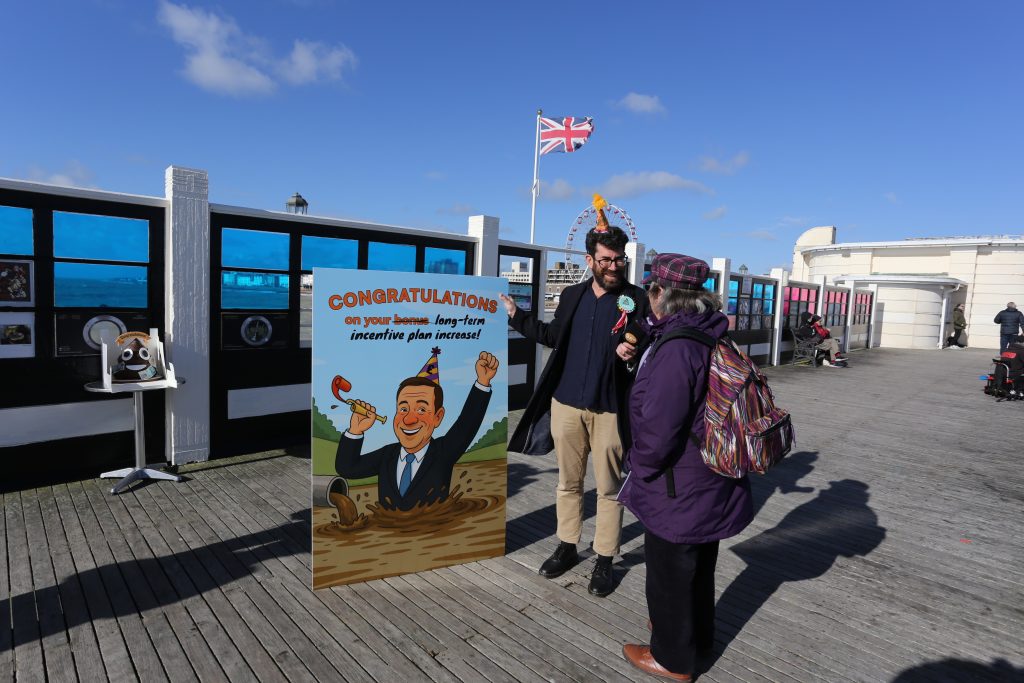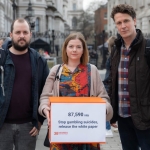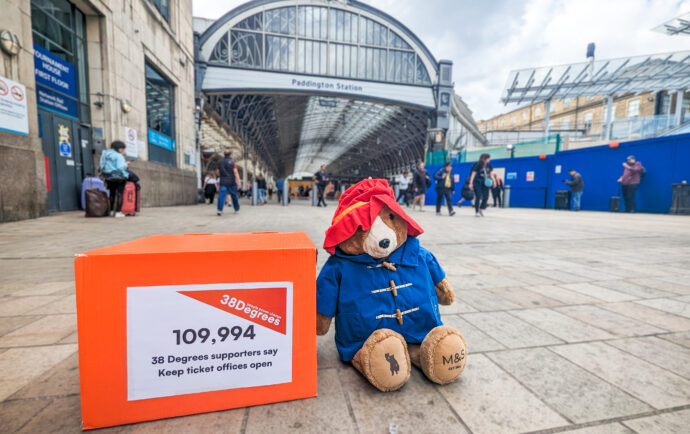
Sep 16th, 2011
Badger Cull – follow-up questions for Chief Vet
By marie

The government’s Chief Vet, Prof Nigel Gibbons, agreed to answer five follow-up questions about the badger cull plans. His response is below. The 38 Degrees office team read all the questions submitted and chose the five that seemed to best sum up some of the key issues.
What do you think of the Chief Vet’s answers?
CHIEF VET: “Thank you for giving me the opportunity to answer some of the follow-up questions that 38 Degrees have selected and to everyone who has engaged with the scientific issues. I hope you have found my answers useful, and more information can be found on the Defra website.”
QUESTION 1: Natural England have said there is no way badger numbers in the cull areas can be accurately measured. Nor will it be possible to accurately count or measure population changes as a result of the cull. They (NE) advise against undue reliance on the monitoring of badger numbers.
Who will check that the numbers of badgers killed, and the numbers of badgers killed humanely are not falsified? If we do not have an accurate figure to start with (especially if there is apparently to be no survey at all, never mind it being nearly impossible to achieve accurately) how will farmers know when to stop? Indeed, WILL THEY STOP? What assurances can you give that licences will be adhered to, and monitoring carried out well enough to ensure that breaking of licence conditions does not happen? Jo Bates-Keegan
CHIEF VET’S ANSWER: “We have a large amount of information from past fieldwork that can be used to estimate badger numbers. Natural England would use this information in combination with applicants’ assessments of the numbers of setts present on their land to estimate the size of the badger population within a licence area and advise applicants on the minimum number of animals they need to remove.
To prevent local extinction we would monitor the presence of badgers following culling. We would look for signs of badger activity such as the presence of active
setts, latrines etc, and if activity is found to be very low we would take action such as stopping activity under the licence for the remainder of that year. If culling goes ahead this monitoring would be maintained in all areas where culling is permitted.
Our assumptions about the humaneness and the ability of controlled shooting to achieve this level of removal would be assessed initially in two pilot areas, overseen by an independent panel of experts.”
QUESTION 2: The level of competence for gunmen to kill badgers is Deer Stalking Level 1. It is my understanding that it is illegal to hunt deer at night in England (apart from one hour after sunset and one hour before morning). Badgers are mostly nocturnal. How can a qualification for hunting during the day be applicable for measuring humaneness when hunting at night – and for a species that is many times smaller?
Will independent observers be monitoring the shooting? And what safeguards will be put in place to ensure that badgers not killed outright will be measured for humaneness if those taking part benefit from proving that they are (i.e farmers who want a ‘cull’)?
You say that the only way to eradicate TB in cattle in Britain is by involving killing badgers. Surely, as most dairy cattle are slaughtered after four to five lactations (and beef cattle considerably sooner) a cattle vaccine would effectively halt TB in cattle in half a decade – and TB in badgers would cease to be an issue (as they would not be catching it from cattle). What is Defra and the Government doing to advance the case for cattle vaccination with regards to EU regulations? Justin Kerswell
CHIEF VET’S ANSWER: “Operators won’t just demonstrate competence through the Deer Stalking Certificate or equivalent qualification. Operators would also be required to attend a Government-approved and independently audited badger-specific training course to cover anatomical and behavioural characteristics
of badgers and how these differ from other species, and the considerations that need to be taken into account when culling at night.
Humaneness would be monitored by official observers both in the pilot areas and as part of any ongoing policy of badger control. This monitoring is likely to include a combination of field observations and post-mortems. This would be agreed with the relevant experts, including those on the independent expert panel which would be set up to oversee the assessment of the pilot areas.
An affordable and usable cattle vaccine is a high priority for us, and we’re continuing to invest heavily in developing a vaccine and a test to allow us to tell the difference between vaccinated cattle and those that have TB. However, we can’t say with any certainty if and when these will be ready to deploy in the field not least because there is currently an EU ban on the use of cattle vaccines for TB. Vaccination of cattle is very unlikely to be the sole solution to breaking the transmission cycle between wildlife and cattle, and between cattle and cattle, as TB vaccines are far from 100% protective, we therefore need to take other measures to prevent spread.”
QUESTION 3: “There’s no evidence to suggest that the results would be any different.” No evidence that shooting over 6 weeks might have different results from trapping and shooting over a few days?
There certainly is, in the RBCT Final report, page 78:
“The rise in prevalence associated with repeated proactive culling was particularly great following four proactive culls that were conducted in a piecemeal manner over a period of several months (‘maintenance culling’), rather than in a single operation (Woodroffe et al., 2006b).”
The Final Report also says on page 164 : “Were culling to be conducted on different spatial scales, using different trapping methods, or under different landscape conditions, its effects on cattle TB would be quantitatively (and perhaps also qualitatively) different from those recorded in the RBCT.” Gavin Wheeler
CHIEF VET’S ANSWER: “A Joint Group of independent scientists on Defra’s Science Advisory Council and Bovine TB Science Advisory Body considered the evidence you refer to. Its expert opinion was that, if culling was carried out over a period of not more than six weeks, this was likely to reduce any potential risk of adverse effects of non-simultaneous culling.”
QUESTION 4: Professor John Bourne Chair of the ISG has stated that “scientific findings indicate that the rising incidence of disease can be reversed and the geographical spread contained by the rigid application of cattle based control measures ALONE.”
This is being achieved in North Pembs which has the most stringent cattle controls and biosecurity measures in England and Wales. More than 50% reduction in cattle slaughtered has been achieved in just over two years. Michael Griffiths
CHIEF VET’S ANSWER: “Each and every transmission route needs to be tackled to help control bovine TB. Measures to address bovine TB in cattle are the cornerstone of our efforts to control the disease – however where there is TB in badgers it also needs to be tackled to achieve the best possible disease control. No other country with a similar reservoir in a wildlife species has made successful progress towards TB eradication without stringent wildlife control measures.”
QUESTION 5: MY QUESTION IS THIS… If you’re going to record all badger carcases, why not test them for btb too? Isnt this simply because you know you will also be killing badgers which do NOT have btb as well and don’t want to further upset an already angry public? Wayne Taylor
CHIEF VET’S ANSWER: “As I said in my previous answers, it is not necessary to test badger carcasses for TB because we already have publicly-available evidence about how widespread TB is in badgers in certain areas of the country. We know that not all badgers in these high incidence areas are infected with TB. However, the fact remains that in these areas, badgers are a significant reservoir of TB infection, and without tackling this we will never be able to eradicate the disease in cattle.”
We’ll be handing in our petition on Tuesday 20th September, the day the consultation closes. If you’re not satisfied by the Chief Vet’s answers, can you ask your family and friends to add their names before Tuesday? You can use our simple tool to ask them to join in.

















